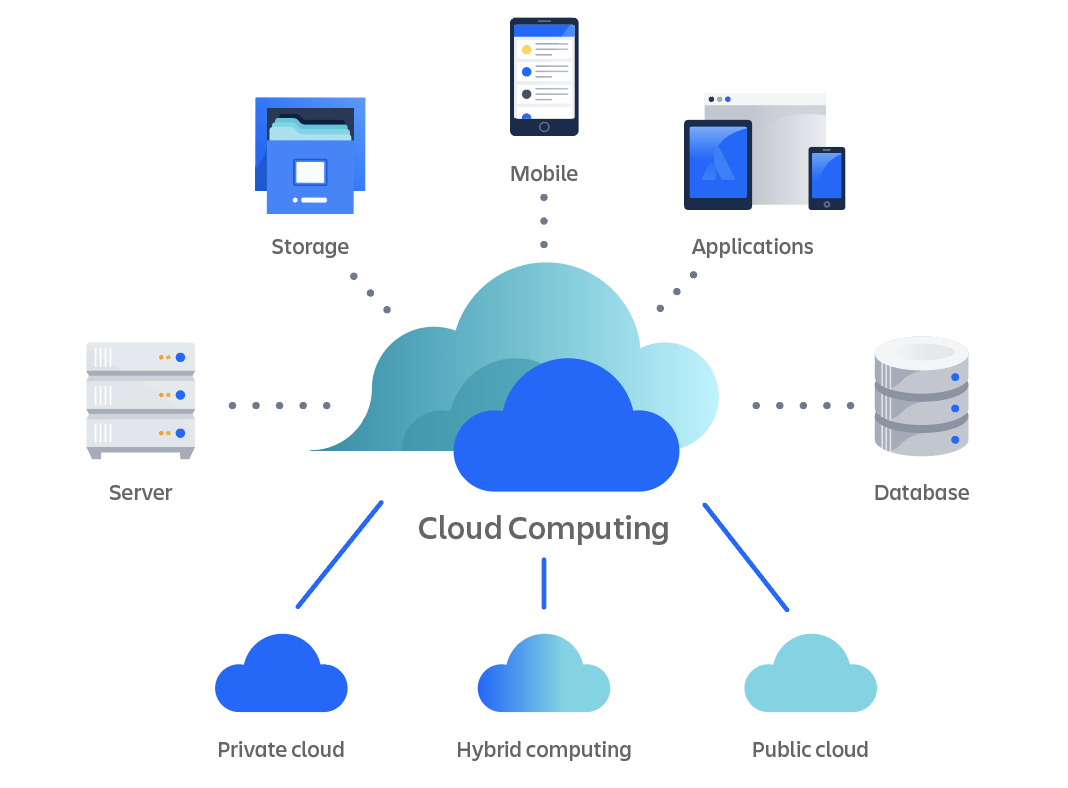Drive Development: Utilizing the Power of Cloud Solutions
In the fast-paced landscape of contemporary organization, harnessing the power of cloud services has actually become an essential component for organizations aiming to drive development and maintain an one-upmanship. The capability to range resources dynamically, embrace cutting-edge technologies perfectly, and streamline development processes effectively can considerably affect a company's ability to innovate and adapt. As we explore the elaborate partnership in between cloud solutions and innovation, appealing insights on how cloud options reinvent standard company techniques and lead the means for groundbreaking developments will be revealed.
Benefits of Cloud Services
Cloud solutions provide many advantages to companies and people looking for adaptable and reliable options for their digital requirements. One of the crucial benefits of making use of cloud services is the cost-effectiveness they provide. By moving to the cloud, companies can remove the requirement for costly on-premises equipment and maintenance expenses, rather choosing a pay-as-you-go design that aligns with usage. This scalability allows companies to change resources based on need, causing optimal expense management.
Furthermore, cloud solutions enhance ease of access and collaboration among groups. With information saved in the cloud, workers can securely access files and applications from anywhere with a net connection, promoting remote job capacities and improving productivity. Real-time collaboration functions enable several customers to work with documents all at once, cultivating smooth synergy no matter physical area.
One more benefit of cloud services is the improved information safety and security and disaster recuperation they provide. Cloud providers apply sophisticated security procedures to safeguard data from cyber threats, making certain compliance with industry laws. In addition, automated backups and healing services decrease the risk of information loss due to unexpected occasions, offering satisfaction to users.
Cloud Movement Methods
Transitioning to shadow services entails careful preparation and calculated implementation to guarantee a smooth and efficient migration procedure. When relocating their procedures to the cloud, there are numerous cloud movement techniques that organizations can consider. One usual technique is the 'Rehost' strategy, where applications are raised and shifted to the cloud with marginal changes. This approach is quick however may not fully maximize cloud benefits. The 'Replatform' technique entails making some cloud optimizations during migration, such as upgrading the application design to capitalize on cloud-native features. universal cloud Service. For an extra thorough improvement, the 'Refactor' technique involves rearchitecting applications to be cloud-native, improving scalability and efficiency. Furthermore, the 'Repurchase' strategy entails replacing existing software with cloud-based options, while the 'Retire' strategy involves deactivating repetitive applications. Picking the right migration method relies on aspects like cost, timeline, and desired outcomes, requiring a careful assessment of each option's benefits and challenges.
Enhancing Cooperation in the Cloud
Enhancing group partnership through cloud-based devices can considerably increase performance and simplify communication within companies. By leveraging cloud solutions, teams can work with each other seamlessly regardless of their physical locations, making it possible for real-time collaboration on jobs.

Security Factors To Consider for Cloud Adoption
How can organizations ensure the robust security of their data when taking on cloud services? Protection factors to our website consider are extremely important in the fostering of cloud services. Normal safety and security audits and tracking of the cloud environment aid in spotting and reducing any kind of protection breaches quickly.

Cloud-Native Advancement Practices
In the world of cloud computer, accepting cloud-native advancement techniques is vital for organizations making every effort to maximize their digital infrastructure and improve functional performance. Cloud-native technology techniques entail establishing applications specifically for cloud environments, leveraging the scalability, versatility, and dexterity that cloud services supply. Deliberately applications with cloud-native principles in mind, such as microservices design, containerization, and orchestration, organizations can improve their growth procedures, boost source usage, and respond a lot more efficiently to changing market demands.
In addition, cloud-native development practices promote continual combination and continuous shipment (CI/CD) pipes, allowing automated testing, implementation, and surveillance of applications. This iterative approach fosters faster innovation cycles and enhances overall software next quality. Furthermore, the use of serverless computer and handled solutions allows organizations to concentrate on creating core company performances while offloading facilities management tasks to cloud service carriers.
Basically, embracing cloud-native innovation techniques encourages organizations to drive advancement, increase time-to-market, and remain competitive in today's swiftly evolving digital landscape.
Verdict

As we explore the detailed relationship in between cloud solutions and technology, interesting understandings on exactly how cloud services reinvent traditional organization practices and pave the way for groundbreaking improvements will link be exposed. - universal cloud Service
There are a number of cloud migration techniques that organizations can take into consideration when moving their operations to the cloud. Cloud-native development practices include developing applications specifically for cloud environments, leveraging the scalability, flexibility, and agility that cloud services offer. Additionally, the use of serverless computing and took care of solutions permits companies to focus on developing core business functionalities while offloading infrastructure management jobs to cloud solution suppliers.
It is imperative for firms to think about cloud movement strategies, boost cooperation in the cloud, and focus on protection procedures to make certain successful fostering of cloud services and drive development within their company.